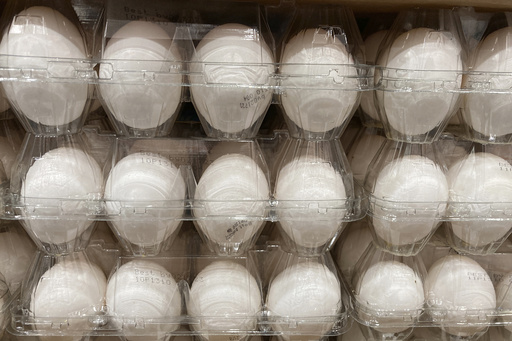Egg prices are experiencing another uptick amid an ongoing bird flu outbreak that is coinciding with the heightened demand associated with the holiday baking season. However, these prices remain considerably lower than the peak reached nearly two years ago. According to the American Egg Board, a trade organization, the egg shortages seen in grocery stores have been limited and temporary thus far.
Emily Metz, president and CEO of the Egg Board, mentioned, “These issues are being resolved quickly, often within a single day.” In October, the average cost for a dozen eggs in cities across the United States stood at $3.37, a slight decrease from September and a significant drop from January 2023’s average of $4.82. Nonetheless, this figure represents a 63% increase compared to October of the previous year, when the price for a dozen eggs was approximately $2.07.
Metz highlighted that the egg industry typically sees its peak demand during the months of November and December. “No holiday baking, whether it’s pumpkin pies or stuffing, is complete without eggs,” she noted. The primary catalyst behind the rising prices is avian influenza. Since its inception in February 2022, the current bird flu outbreak has resulted in the culling of more than 111 million birds, primarily laying hens. Whenever the virus is detected on a farm, all birds are euthanized to prevent further spread of the disease.
This month alone, over 6 million birds have been culled due to the outbreak. Despite representing a small fraction of the total U.S. egg-laying population of 377 million chickens, the flock size has decreased by around 3% over the last year. This decline has contributed to a 4% reduction in overall egg production, according to the Department of Agriculture.
The latest outbreak of the bird flu is particularly impacting the supply of cage-free eggs in states like California, which has been heavily affected. California, along with Nevada, Washington, and Oregon, has regulations that mandate only cage-free eggs be sold. Metz explained, “We are reallocating eggs from other regions of the country that produce cage-free varieties to address the shortfall in those states.” Plans are in place for similar cage-free requirements to begin in Arizona, Colorado, and Michigan next year and in Rhode Island and Utah by 2030.
The escalating demand for specialty eggs may also play a role in the avian flu spread since this virus is transmitted through wild birds’ droppings. Allowing chickens more freedom to roam increases their exposure to this risk, noted Chad Hart, an agricultural economist at Iowa State University. “Controlling the interaction between domesticated birds and wild birds is a significant challenge,” Hart explained, adding, “We’re pushing the egg industry to adopt practices that were not previously utilized.”
Metz also indicated that climate change and severe weather phenomena are altering the migratory patterns of wild birds. “Hurricanes and wildfires are displacing birds, leading them into areas they normally might not occupy at certain times of the year,” she stated. “These shifting patterns introduce new challenges for our farmers.”
As the egg industry aims to replenish its flock, this endeavor can also result in limited supplies since farmers must reserve some eggs to hatch new chickens. Fortunately, there is a silver lining for U.S. poultry farms: the cost of chicken feed, which accounts for 70% of a farmer’s expenses, has witnessed a significant decline after experiencing a surge between 2020 and 2022.


